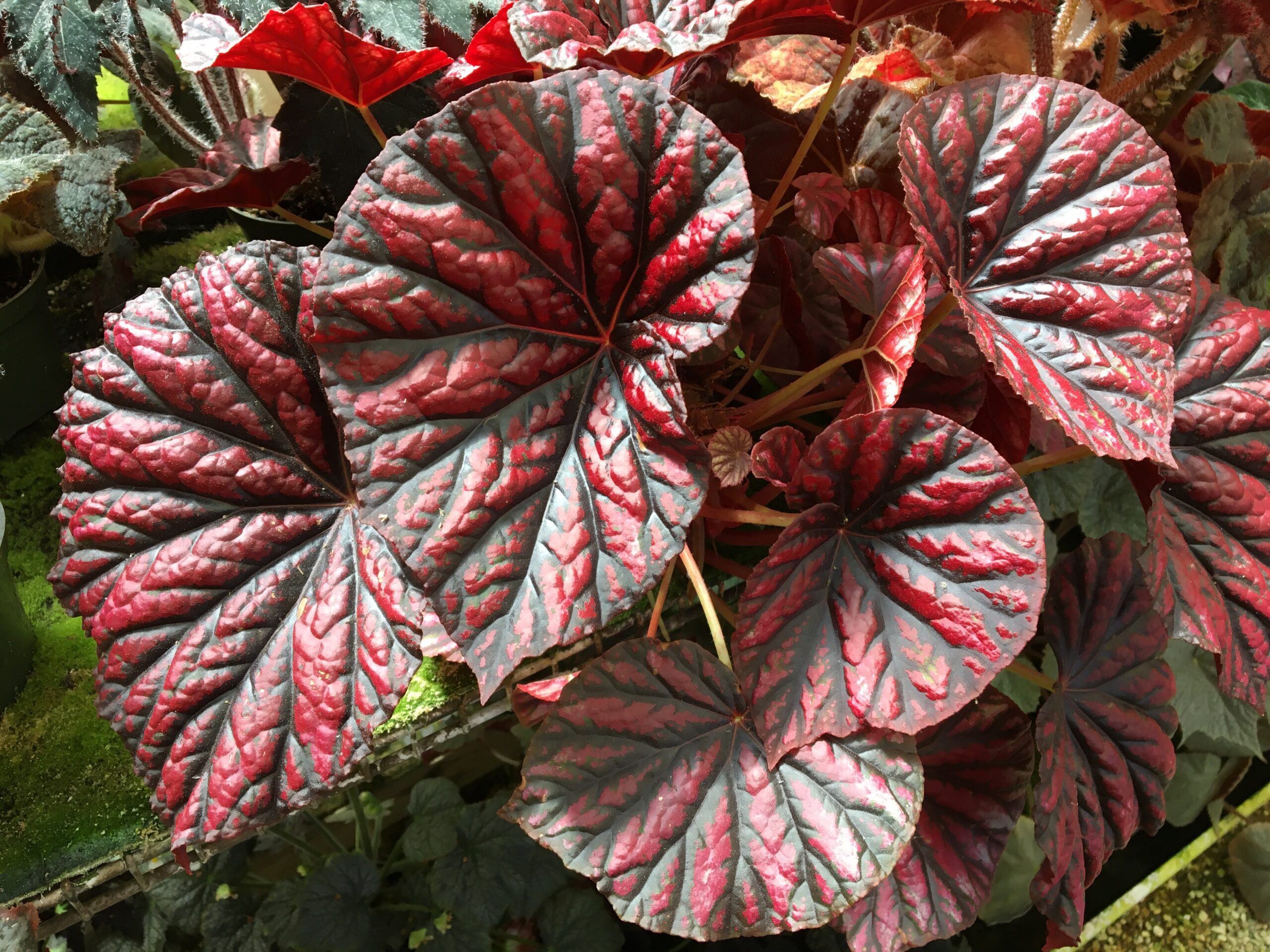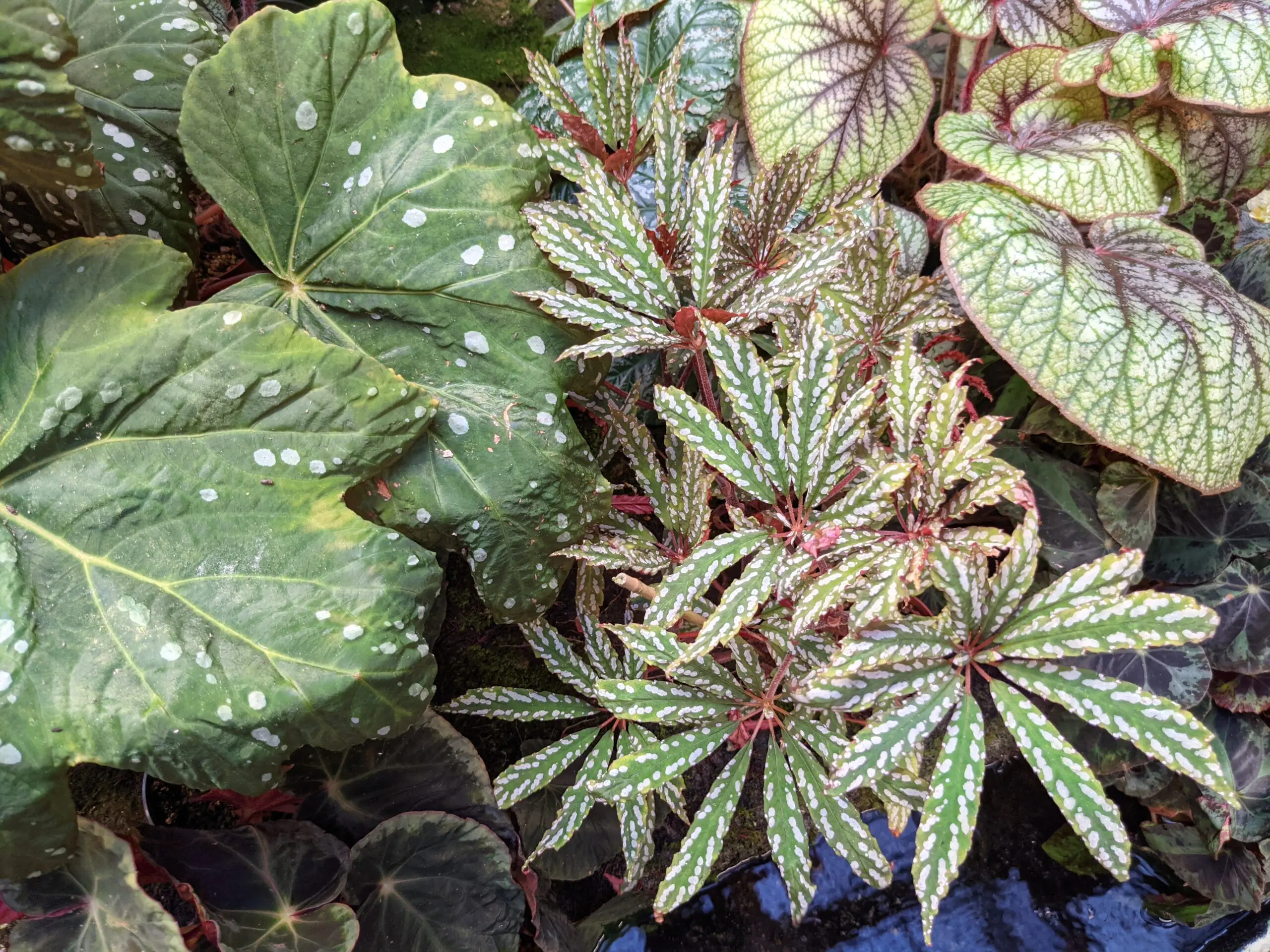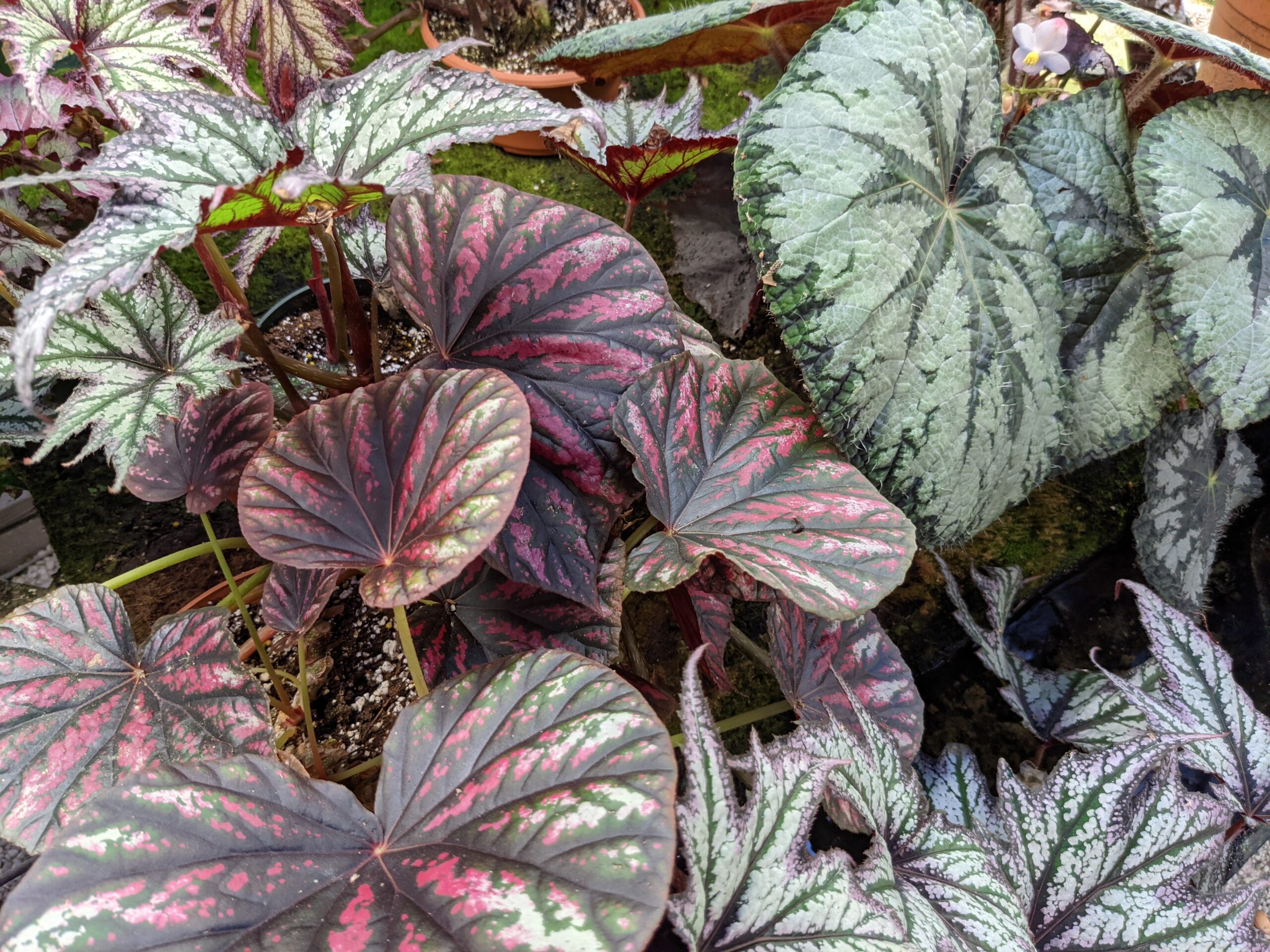Bringing Your New Begonia Home…
Rhizomatous begonias are interesting plants: Spectacular. Varied. Cantankerous and difficult to grow. But there are a few simple actions you can take that will insure a high rate of survival with these beguiling beauties.
Humidity is the Key..
Many well-meaning begonia enthusiasts kill off their new rhizomatous begonias soon after bringing them home. “Damn, I must have over watered another one!” mutters the grower. But, this is often not the case. I think THE SHOCK of bringing one of these rhizoids home to a new climate is simply too much for many of them. Let me explain…
The new plant most probably came from a place where the environment was hotter or colder, wetter or dryer, or sunnier or darker than your back yard. This often proves to be too much for such delicate vegetation. But, it’s easier than you think to compensate for this.
When I bring a new plant home, I put it in a plastic bag or clear plastic box in a relatively dark, protected spot for a week or so. I mist the plant with water, or water and Superthrive ™ for extra humidity. Every day, I open the container a little. I gradually move the plants into an area with more light. Since I’ve been doing this, I’ve only lost two or three plants, which is infinitely better than the mass suicide situations I used to encounter. Remember to keep the container out of direct sunlight since this mini- “greenhouse” will trap heat and quickly turn your plant to a brown mush. The two best places I’ve found to purchase plastic boxes are Pic and Save and Target.
Even Weak Plants Can Survive…
In case you bring a very small plant home from somewhere, there are other measures you can take to ensure its survival. Understanding that infant -plants are more delicate than older ones, you might want to keep the plant in a darker and/or more protected spot than the others. Keeping it in a plastic bag or box with a little extra humidity for as long as needed also helps.
Do not overwater the plant, because baby rhizomatous begonias are even more sensitive to water than their more established siblings. One good way to determine if a plant needs water is to pick up the pot and feel how heavy or light it is. By doing this often, you will soon develop a sensitivity as to when a plant is dry and requires watering.
You can, of course, put your finger a half inch or three-quarters of an inch into the soil. If it’s cool to the touch, there’s still water down here. With older plants in larger pots you may want to put your finger three-quarters of an inch down into the soil to check for wetness. If it’s dry that far down, you can go ahead and water.
One last help for very young or particularly sensitive plants is to seal them, pot and all, in some sort of terrarium and put them indoors under a fluorescent light. While this may sound like a lot of work, it’s well worth the effort to put up a fluorescent fixture in the garage or spare bedroom. Some plants do not winter well, even in Southern California’s mild weather, and an indoor setup will keep them robust through the damp, cold winter.
It’s also comforting to have one’s treasured plants nearby so you can enjoy them without having to go outside in the drizzle or icy fog. Most nurseries and hardware stores’ garden shops have one or more books which discuss terrariums and indoor gardening.
Soil Can Make the Difference…
I repot all my rhizomatous begonias in my own soil mix once I get them home. Others’ soil mixes may hold more or less water than yours. Your own soil causes the new plant to dry out at about the same time as your other plants, making watering uniform.
The last safety measure for rhizomatous begonias is to take a leaf and propagate it.
Maria Holmes is our Quick Tips Editor (Don’t forget to send her yours!). She lives in Harbor City, CA.





